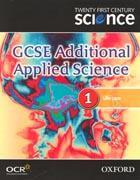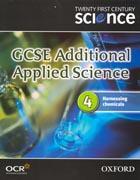James Oldham reviews this series of GCSE textbooks
GCSE Additional Applied Science: A1 - Life care; A2 - Agriculture and food; A4 - Harnessing chemicals
University of York Science Education Group and Nuffield Curriculum Centre Oxford
OUP 2006 | Pp64 each | £8.50 each | ISBN 0 199 15026 5, 0 199 15027 3, 0 199 15029 X

This series of books covers a range of topics which links science to the real world. A central tenet of the Twenty first century science curriculum, this link is made up front in each book through examples of people who use science. Each text starts with three-five profiles of scientists in action. These colourful pages are illustrated with photos of the scientists at work and include a résumé of how science is used by each of them.
The next section, People and organisations, again provides contexts for the science covered, which is presented in manageable chunks of information. Paragraph lengths are variable, with some longer passages (up to half a page) and the text is reinforced with key words, good photos and diagrams.

As well as a key words box on each page, there is a box containing questions. These are predominantly comprehension questions, which require students to extract, digest and re-present information from the pages. The demand for higher-order thinking generated by these questions is limited, which restricts the challenge for students wanting to obtain top grades. Teachers would have to supplement these books with their own more testing questions and tasks for gifted and talented students.
Across the books there is considerable variation in how the information is presented. For example, the Life care book is picture and diagram heavy while the Agriculture and food copy contains more text. This pattern continues in the section entitled The science, which describes some of the theories behind the real-life science presented in each book . These differences in presentation make some books more appealing than others.

The fourth section of each book, Procedures and techniques, emphasises the importance of the practical aspect of the course. This is a strength of these books. Practical procedures are clearly illustrated and are accompanied by simply-worded instructions, set out on no-nonsense, uncluttered pages.
Before the index is a good glossary (another forte of the series), which is supplemented by helpful reference pages with information on, for example, chemical formulae and life care organisations. There are also generic pages regarding the portfolio work required for the course. These are written in pupil-speak and summarise the key aspects of the portfolio.
Overall, these books provide some engaging material for the additional applied science element of the Twenty first century science course. Very much student-focused texts which place science in the real world, teachers might find these useful resources to fit into their teaching plans at GCSE.






No comments yet